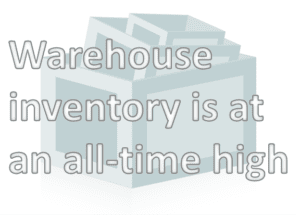 Warehouse’s inventory at an all-time high, choosing a location for storage is tougher than ever. Demand for space is causing prices to go up, and manufacturers want to make sure they are still getting top notch service, especially when expenditures are higher than previous levels. DC Velocity reported U.S. warehousing costs spiked in 2013 as retailers, incented by low interest rates and inventory carrying
Warehouse’s inventory at an all-time high, choosing a location for storage is tougher than ever. Demand for space is causing prices to go up, and manufacturers want to make sure they are still getting top notch service, especially when expenditures are higher than previous levels. DC Velocity reported U.S. warehousing costs spiked in 2013 as retailers, incented by low interest rates and inventory carrying
The report said 2013 warehousing costs increased 5.6 percent over 2012 levels as rising inventories filled all available capacity. Demand for peak-season space in last year’s fourth quarter reached the highest level on record, according to the report. The U.S. industrial vacancy rate ended the year at 8 percent, down from 8.9 percent in 2012, the report said. The report found that warehouse demand was triggered by manufacturers’ and retailers’ forecasts that economic activity would be more robust than it turned out to be. As hopes for a strong holiday buying season failed to materialize, the supply chain was left with excess inventories and an overinvestment in warehouse space.
Asset-based warehousing argues that backed by an LTL infrastructure, all distribution solutions are available without having to bring in a third party, offering a quality warehousing solution backed by great customer service and millions of square footage of space. While it may be a solution after-the-fact, the better solution is to carry inventory based a demand pull avoiding the need to carry expensive unsold inventory. While there warehouse solutions even when the market is strained, end to end pull e-Kanban loops are a better predictive index.
For a decade Ultriva supply chain solutions have synchronized demand-driven manufacturing processes at lower costs and heighted productivity. This real-time SaaS manufacturing software prioritizes the entire order-to-delivery cycle via promoting continuous process improvement. Creating dynamic scheduling, workflow on the shop floor, maximizing throughput, on-time delivery, the ability to manage supply replenishment eliminates excess inventory.
Production priorities are arranged based on changes in demand, without supply chain professionals having to use supplementary emails or telephone calls to alert production modifications. These adaptive demand-driven solutions are automatic, enterprise-wide, and seamless. There is no need to build and update production schedules because orders in the system calculate materials and production availability and constraints. Visibility ensures accurate order and the production team, supply management, customer service, sales and leadership work from one version of the truth.
Production reporting offers analytical tools and real-time data to track, predict, and improve the performance of all operational functions. The cost of maintaining excess inventory will grow more expensive, especially for the small or mid-sized manufacturer competing for the same finite space as larger companies. The only sure way to maintain the margin of products delivered is to minimize and mitigate excess inventory.
Request an Inventory Optimization Assessment and use our free Inventory Optimization Tool to see how much excess inventory you are carrying, and how to “right-size” your inventory.
Next best reads for you
Next best reads for you
- Data Sheet Achieve supply chain excellence with Upland Ultriva
- Webinar On Demand How convergence improves supply chain performance
